Your Guide to a Thriving Thanksgiving Cactus (and Finally Getting it to Bloom)
I’ve been obsessed with plants for as long as I can remember, and there’s one that people ask me about more than any other: the Thanksgiving cactus. It’s funny, we see them passed down through families, becoming this living, breathing part of holiday traditions. But so many people get one as a gift—a stunning pop of color in the fall—only to watch it struggle a few months later. Honestly, it’s almost always because of a simple misunderstanding of what this plant actually is.
In this article
- Why It’s Not Your Average Cactus
- The Perfect Home: Nailing the Potting Mix
- Finding the Sweet Spot for Light
- The Art of Watering: Less Is More
- How to Trigger Those Beautiful Blooms
- Pruning for a Fuller, Happier Plant
- Troubleshooting Common Problems
- A Quick Guide to the Holiday Cactus Family
- More Than Just a Plant
- Galerie d’inspiration
So let’s get one thing straight right away. This is not a desert cactus. It doesn’t want to bake in the sun, and it definitely doesn’t want to live in dry, sandy soil. This plant is a forest dweller, an epiphyte from the humid, high-altitude cloud forests in Brazil. In the wild, it grows on other plants, like in the crook of a tree, not in the ground. And if you can just wrap your head around that one fact, you’ve already won half the battle. Every single care decision flows from that truth.
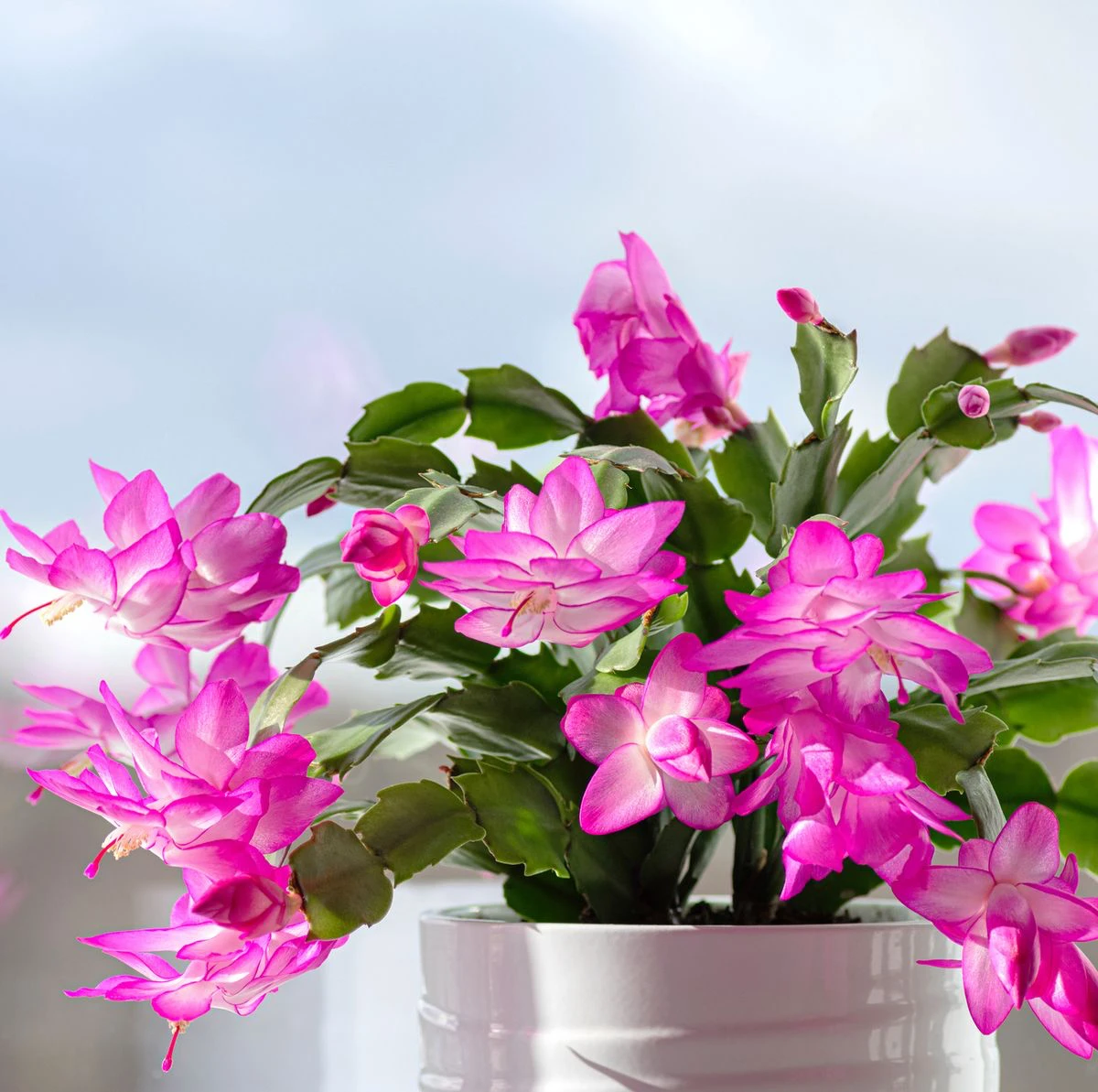
Why It’s Not Your Average Cactus
Before you even think about grabbing a watering can, let’s get into the why. As a plant that lives on trees, its roots are designed for two things: anchoring it to bark and absorbing quick bursts of moisture from rain and humid air. They are absolutely not built to sit in dense, wet garden soil. This is why root rot is the number one killer of these guys—the roots literally drown.
Its unique look is also a brilliant adaptation. Those flattened, segmented stems that look like leaves? They’re called cladophylls, and they’re the plant’s solar panels, soaking up the dappled sunlight that filters through the jungle canopy.
And here’s the secret to those famous holiday blooms: it’s all about light and temperature. This is a “short-day” plant, which means it only makes flower buds when it gets long, uninterrupted nights and a bit of a chill in the air. This combo mimics the changing seasons in its native mountain home. Without that specific trigger, it’ll just keep growing green segments year-round, which is fine, but you’ll never get that burst of color.
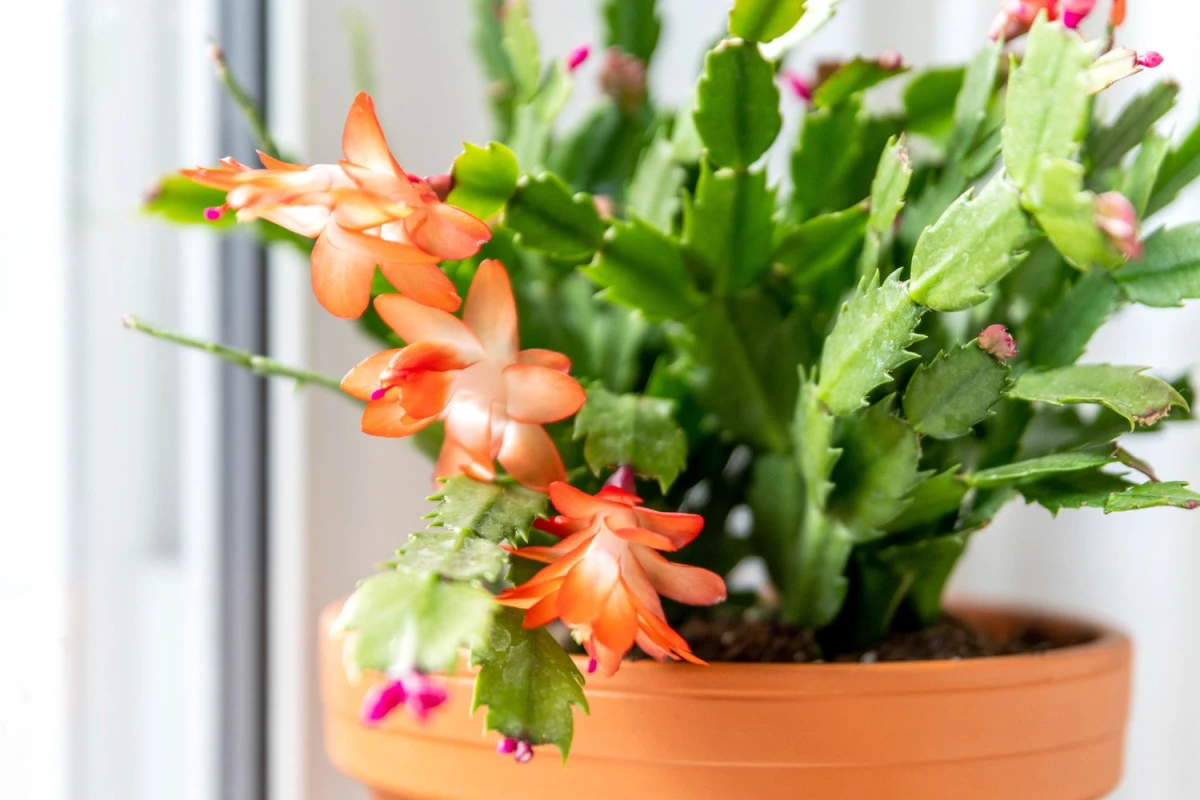
The Perfect Home: Nailing the Potting Mix
I can’t stress this enough: you cannot just use regular potting mix or dirt from your garden. I’ve seen so many beautiful plants fail this way. The soil gets dense and waterlogged, and it’s game over for the roots.
To really make this plant happy, you need a mix that feels like the light, airy, organic stuff it would find in a tree. Here’s my go-to recipe for a soil mix that provides fantastic drainage while holding just enough moisture.
My Pro Soil Recipe & Shopping List:
- Two parts peat moss or coco coir. This is your base for holding a bit of moisture.
- One part small-grade orchid bark. This is the magic ingredient for creating air pockets so the roots can breathe. A small bag usually runs between $8 and $15 at places like Home Depot, Lowe’s, or a local garden center.
- One part perlite or pumice. These little white rocks provide permanent aeration. A bag is super cheap, maybe $5 to $10, and you’ll have it for years.
Mix it all together, and you’re golden. A good, budget-friendly alternative is to buy a bag of high-quality cactus & succulent soil and mix it fifty-fifty with orchid bark. It’s a massive improvement over using the cactus soil by itself.
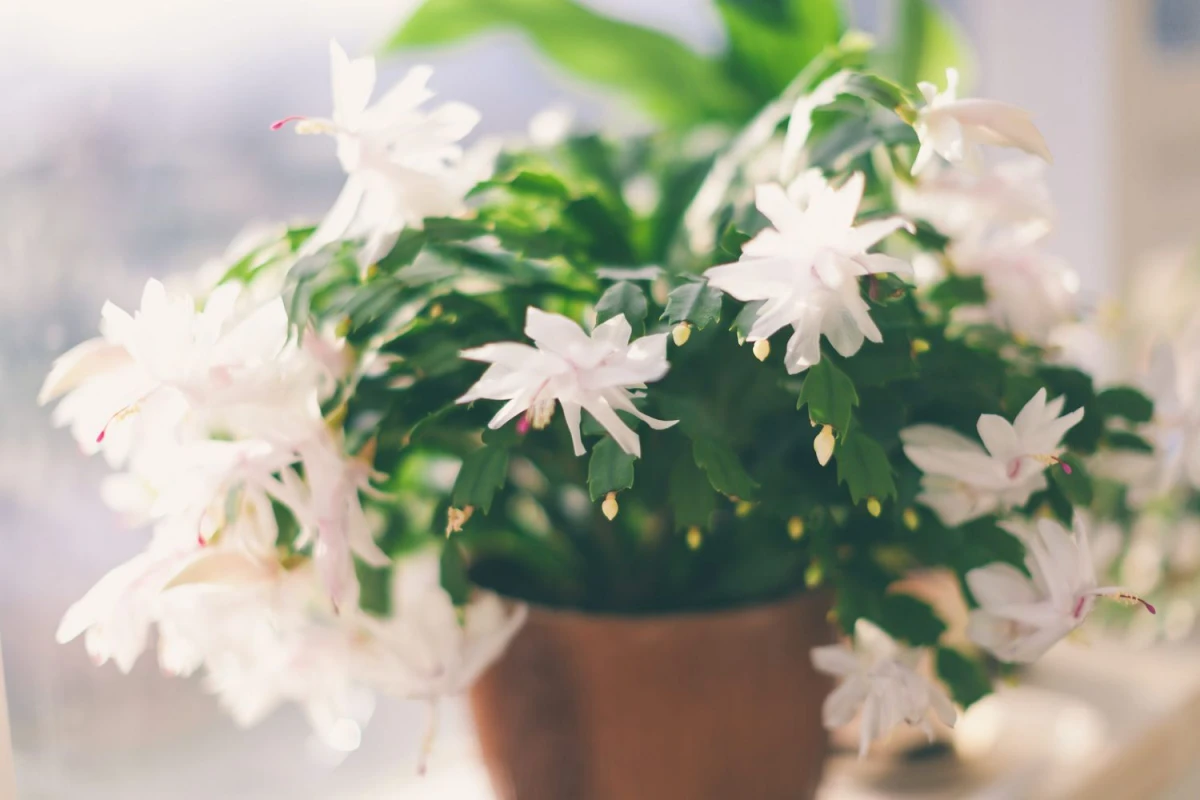
When it comes to pots, drainage holes are non-negotiable. Terracotta is a great choice because the porous clay helps wick away excess moisture, giving you a buffer against overwatering. As for size, these guys actually love being a little snug in their pots. Don’t be tempted to give them a massive new home! When you do repot (maybe every 2-3 years), just choose a pot that’s about 1-2 inches wider in diameter than the old one.
Finding the Sweet Spot for Light
“Bright, indirect light” is the most confusing phrase in the plant world, right? Let me simplify it. An east-facing window is pretty much perfect. It gets that gentle morning sun that won’t scorch the delicate segments. A north-facing window works, too, though growth might be a bit slower.
Just be careful with south or west-facing windows, as the afternoon sun can be way too intense. I once fried a gorgeous, mature plant by putting it in a western window for a single afternoon. The segments turned this sickly reddish-purple—a classic sign of sunburn. If a sunny window is your only choice, just hang a cheap sheer curtain to diffuse the light.
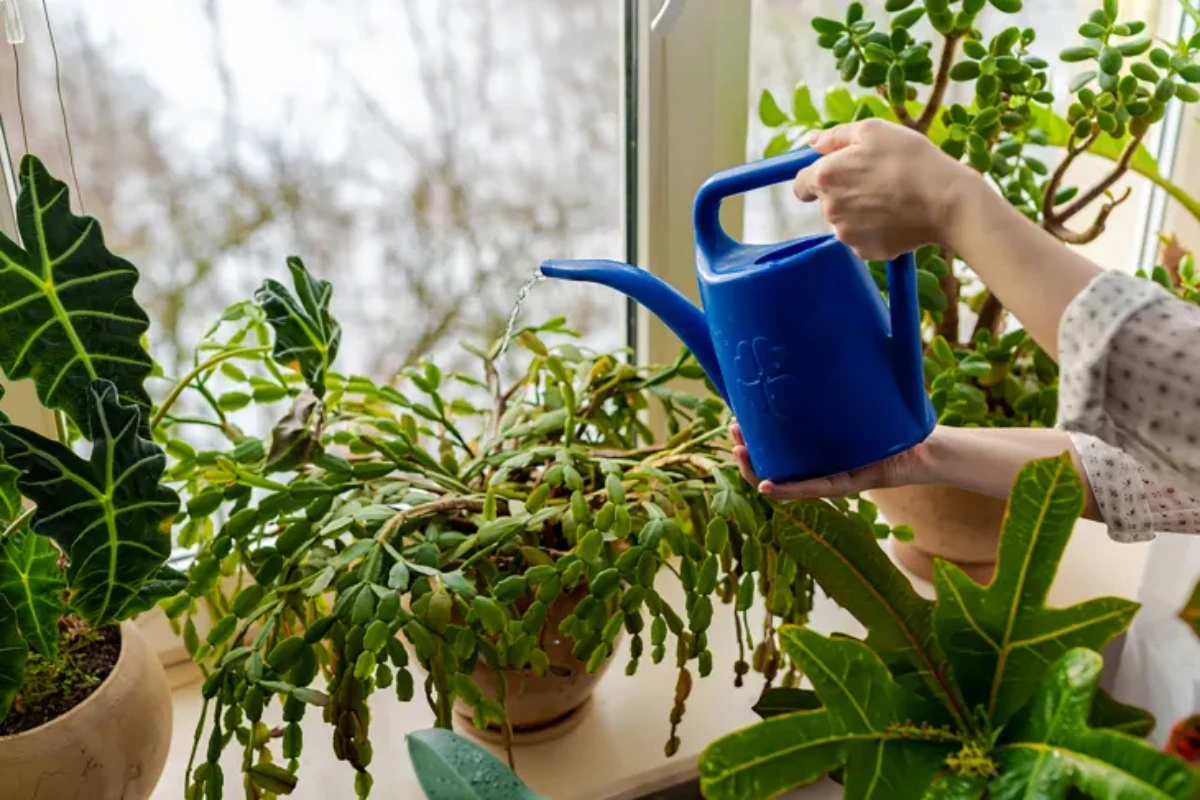
The Art of Watering: Less Is More
Okay, this is where most people mess up. Please, do not water on a schedule. A plant’s thirst changes all the time depending on the season, heat, and humidity. The only truly reliable way to know when to water is to check the soil yourself.
Here’s a little challenge for you. Go to your plant right now and stick your finger an inch or two into the soil. Is it dry? Time to water. Do you feel any dampness at all? Walk away. This ten-second check is the most important habit you can build.
When you do water, do it properly. Take the plant to the sink and drench the soil until water pours out of the drainage holes. Let it drain completely for 15-20 minutes before putting it back in its saucer. NEVER let it sit in a puddle of water.
By the way, if your tap water is really hard, you might consider using rainwater or distilled water occasionally. It’s a small thing, but it can prevent mineral buildup over time.

How to Trigger Those Beautiful Blooms
This is the part everyone’s waiting for. Getting your cactus to re-bloom is incredibly satisfying, and it all comes down to tricking the plant into thinking winter is coming. Starting in the fall (think late September or early October), it needs two things for about six weeks straight:
1. Long, Dark Nights: It needs 12-14 hours of uninterrupted darkness each night. A lamp turning on or headlights from a window can mess this up. A spare bedroom or an office you don’t use at night is the perfect spot. Just put it in there and let nature do the work.
2. Cooler Temps: A little chill encourages budding. Aim for nighttime temperatures that are cool but not freezing—around 55-60°F (or 13-16°C) is the sweet spot. A spot away from a heating vent often does the trick.
Once you see tiny pink or red buds forming on the tips of the segments, you can stop the dark treatment and bring it back to its normal spot. But be careful! At this stage, they are very sensitive. Avoid moving it or making any sudden changes, or you risk the dreaded bud drop.

Pruning for a Fuller, Happier Plant
Pruning isn’t just for looks; it’s essential for encouraging a bushy plant that will produce way more flowers. An unpruned cactus can get long and leggy. The best time to do this is about a month after it finishes flowering, usually around late January or February, once all the old blooms have fallen off.
The technique is super simple. Instead of cutting, just gently twist a segment off at the joint. You can remove one or two segments from the end of a branch. This forces the plant to branch out from that point, often creating two new stems where there was only one. The segments you remove are perfect for starting new plants, by the way! Just let the broken end dry out for a couple of days to form a callus, then stick it about an inch deep in some moist soil. In a few weeks, you’ll have a new baby plant.
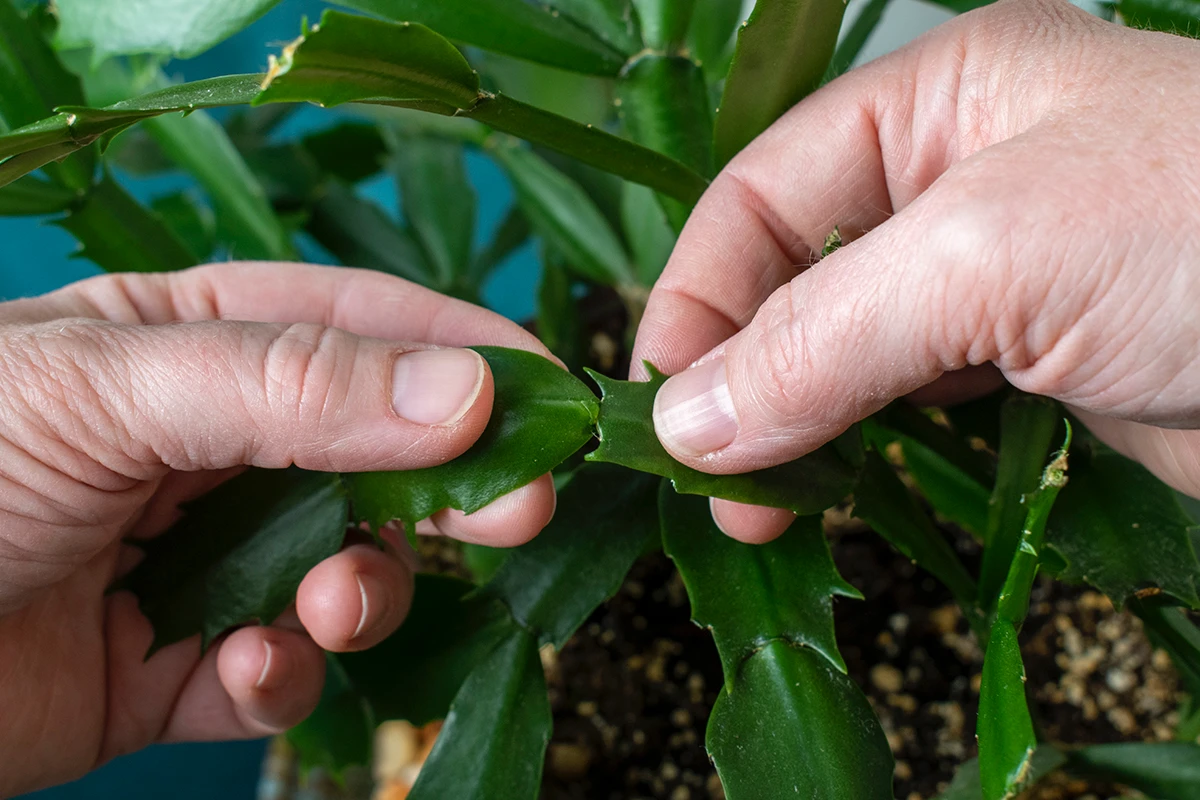
Troubleshooting Common Problems
Even with the best care, things can go sideways. Here’s a quick-fix guide.
- Buds are dropping off! This is almost always caused by a sudden change. Was it hit by a cold draft? Did you move it? Did you suddenly water it way more or less? Keep its environment stable once buds appear.
- Limp, wilted segments: This one is tricky because it can mean both overwatering and underwatering. Check the soil first. If it’s soggy, you’ve likely got root rot. You’ll need to repot into fresh, dry soil and maybe take some healthy cuttings as a backup plan. If the soil is bone dry, it’s just thirsty. Oh, and a quick tip: if watering doesn’t seem to be the issue, check if the plant is root-bound. If the roots are a tangled mess, it might be too crowded to absorb water and needs a slightly bigger pot.
- It just won’t bloom! Go back to the blooming formula. I guarantee the nights weren’t long/dark enough, or the temperatures were too warm. Don’t worry, there’s always next year.
- White fluffy bugs: Those are probably mealybugs. For a small problem, dip a cotton swab in rubbing alcohol and touch each bug to kill it instantly. For a bigger issue, a spray-down with insecticidal soap should do the trick.
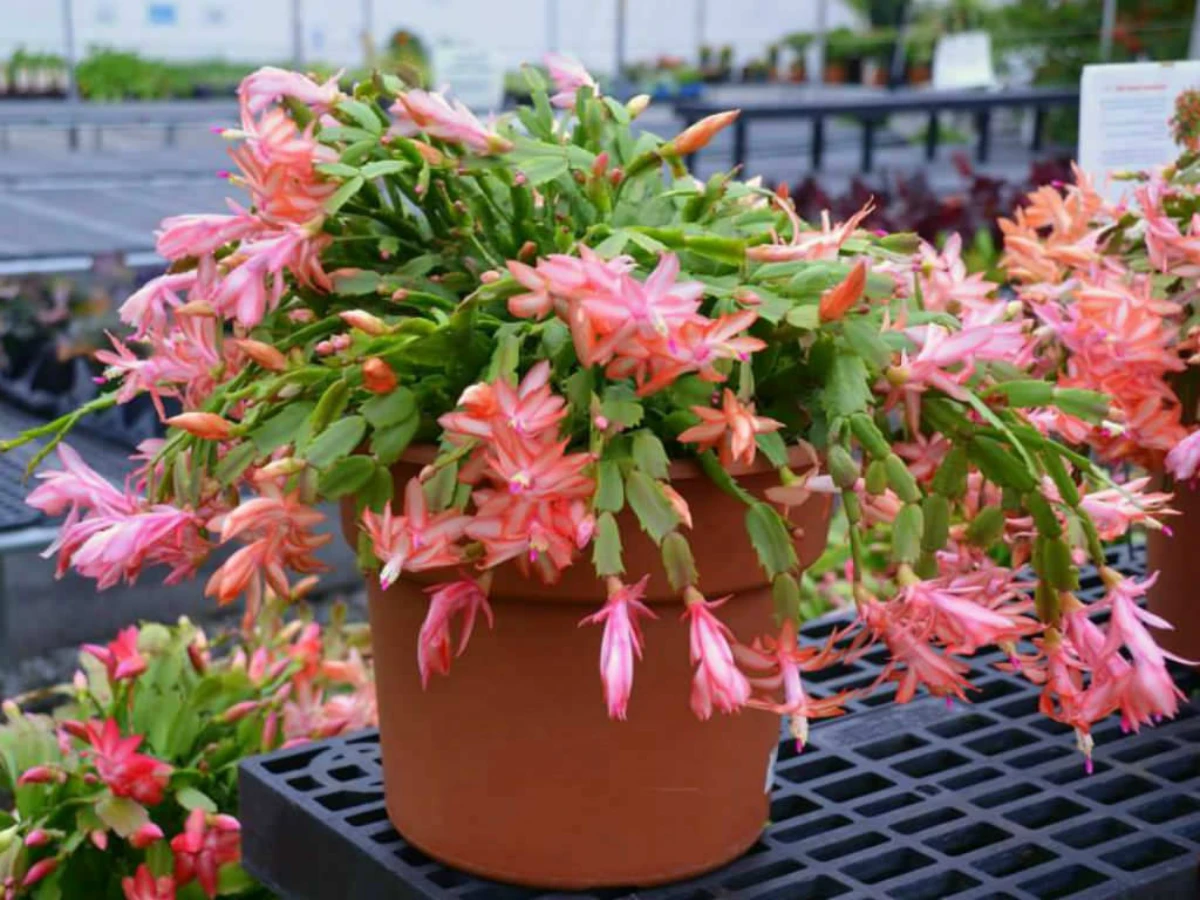
A Quick Guide to the Holiday Cactus Family
You might hear people talk about Christmas or Easter cacti, and they are indeed close relatives, but they are slightly different. It’s helpful to know which one you have!
It’s really easy to tell them apart by looking at their leaf segments. The Thanksgiving cactus has very distinct, sharp, and pointy edges—they almost look like little claws. The Christmas cactus has more rounded and scalloped edges, giving it a softer look. And then there’s the Easter cactus, which has even more rounded, smooth segments and blooms in the spring.
The care for all of them is pretty much the same, but knowing which one you have helps explain why it’s blooming when it is.
More Than Just a Plant
A well-cared-for holiday cactus can live for decades. I have one that I started from a cutting of my grandmother’s plant, and every single time it blooms, it feels like a little piece of her is right here. By understanding where this plant comes from and giving it what it truly needs, you’re not just growing a houseplant—you’re cultivating a living tradition that can bring you joy for years to come.
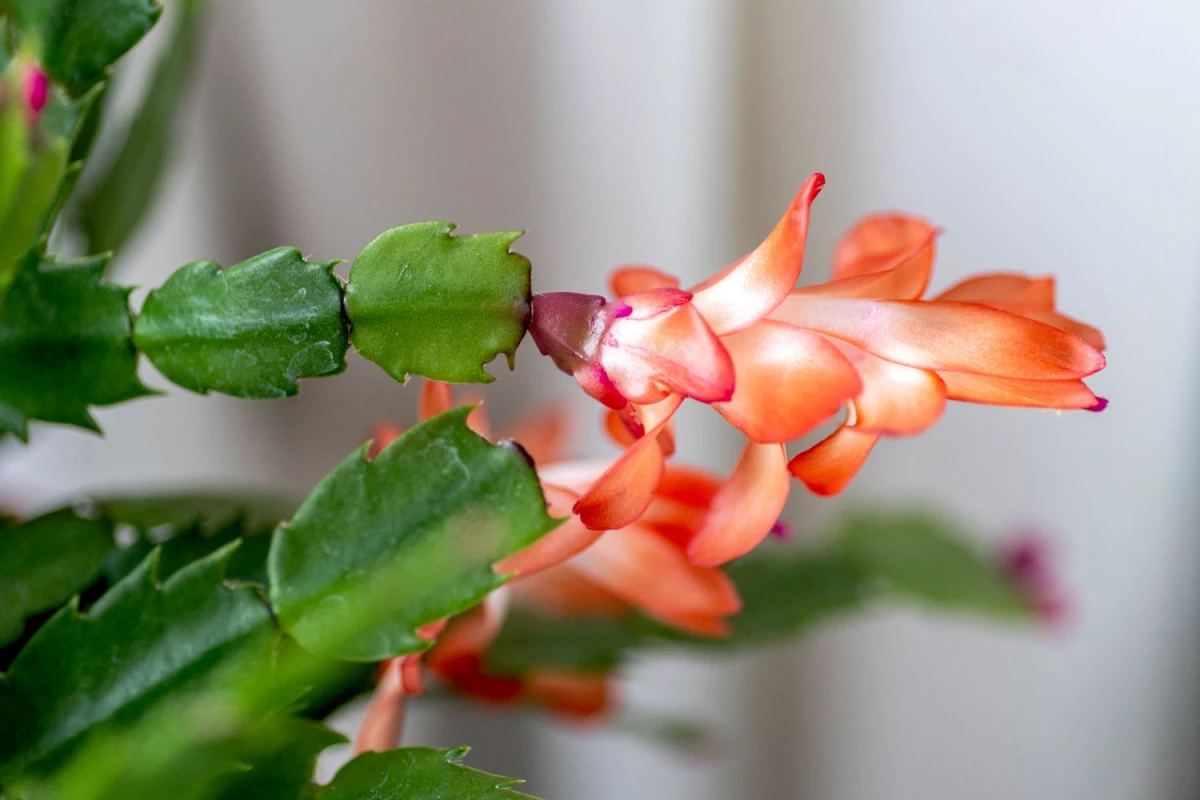
Heads up: While these plants are generally considered non-toxic to cats and dogs, it’s always a good idea to keep pets from chewing on them, as any plant matter can cause a bit of stomach upset.
Galerie d’inspiration
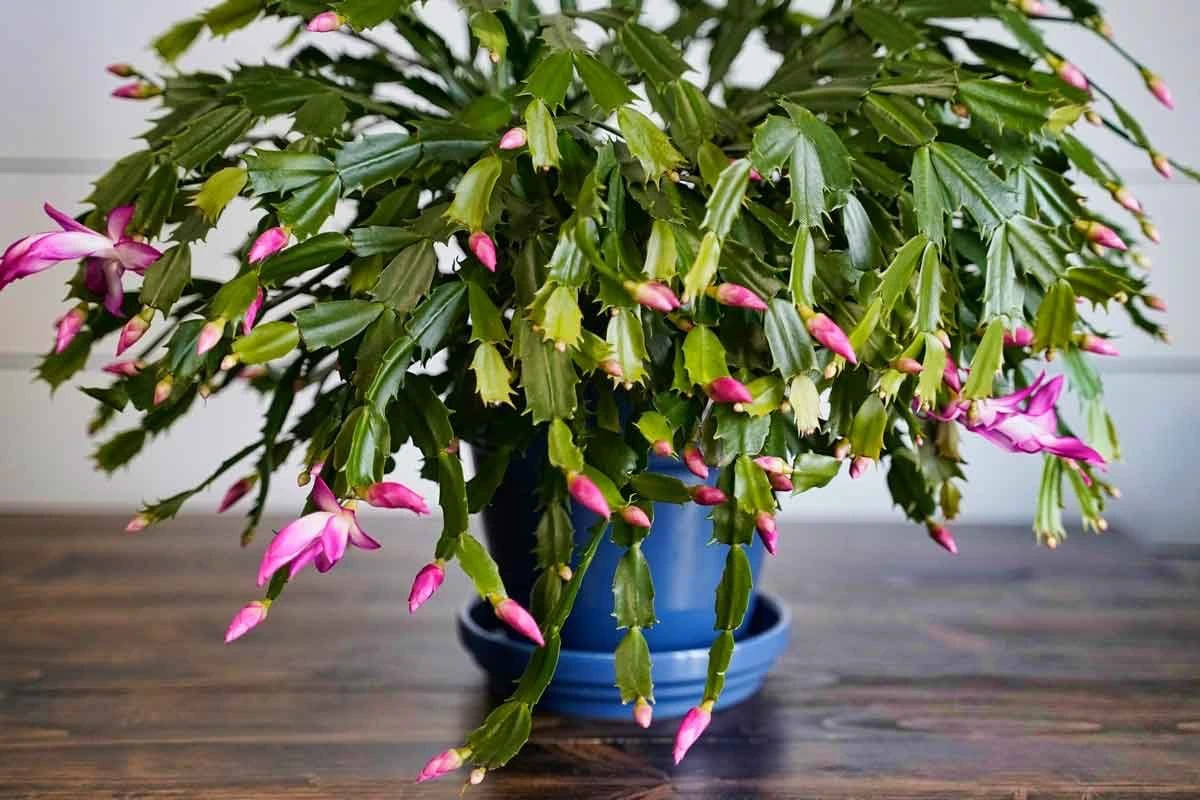
What’s the difference between a Thanksgiving, Christmas, and Easter cactus?
They’re often mislabeled, but the secret is in the ‘leaves’ (cladophylls)! A Thanksgiving cactus (Schlumbergera truncata) has pointed, claw-like projections on the edges of its segments. The Christmas cactus (Schlumbergera x buckleyi) has smoother, scalloped, or tear-drop shaped edges. The Easter cactus (Hatiora gaertneri), a different genus entirely, has more rounded, bristly-looking segments and blooms in the spring with star-shaped flowers.










